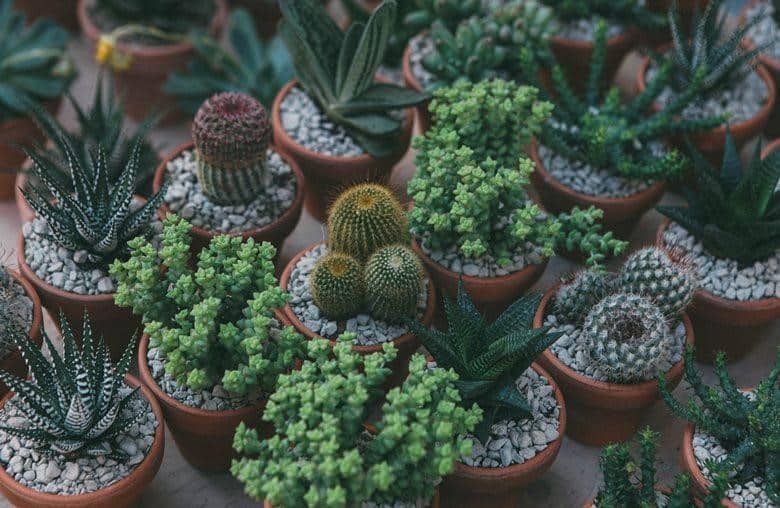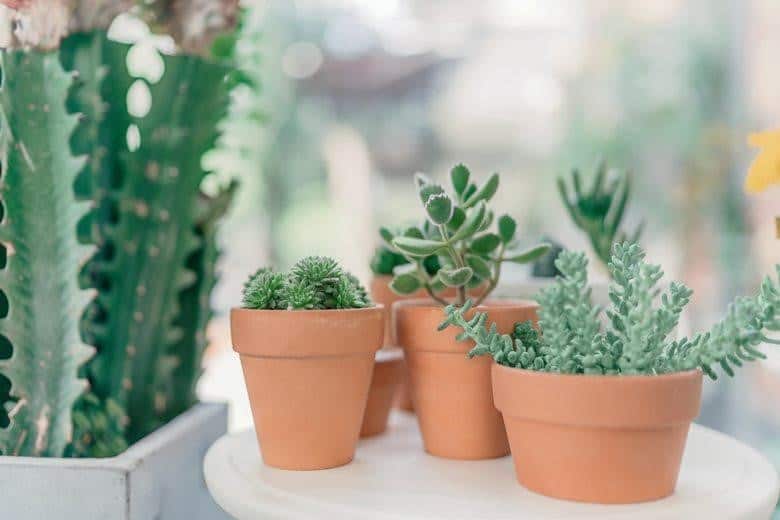Farming Succulents for Sustainable Living to Combat Global Warming
Global warming is real, and it has been affecting our world for over two centuries now; in fact, scientists believe that greenhouse gases started warming our oceans during the early 1800s. This resulted in glacier retreat and changes in weather patterns, the timing of seasonal events, and agricultural production. And if we don’t do something to mitigate the usage of fossil fuels, these changes can pose a huge threat to human beings by 2050.
Therefore, we all have to play our parts, and as homeowners and farmers, there are numerous things we can do to protect our environment. And this means going organic and farming with little to no pesticides, herbicides, and fertilizers. But with the weather conditions being unpredictable, we have to find a way to protect the soil from excess heat and prevent dehydration of the other plants while reducing carbon dioxide and VOCs concentration organically.
Luckily, there are numerous plants like succulents that can help combat global warming. Succulents are drought-resistant plants that can thrive under harsh conditions. Succulents are known to improve the quality of the air in places where they have been planted.

Contents
Why Plant Succulents in Your Garden?
Succulents can keep your landscape green and fresh with little to no watering in the dry seasons. And that is because they store their water in their leaves and use them during the dry seasons. But they don’t do well on poorly draining soil, which is actually the reason why most farmers plant them in the rocky parts of their farms. After all, they can thrive in the same soil as the other plants, as long as the soil drains well.
Succulents can grow together with a wide range of plant species, and this includes ornamental grasses. But you have to keep the height of ornamental grasses low using your reel mower; after all, a gas mower can cause both air and noise pollution. Succulents have numerous benefits, and one of the main ones is their role in fighting global warming. Planting succulent plants in your garden can help protect the environments in numerous ways, including:
Succulents Can Metabolize Carbon Dioxide
Carbon dioxide is a known greenhouse gas that radiates and absorbs solar radiation and heat from the sun. When warmed by the sun, the ocean and land surfaces radiate thermal-infrared energy to the atmosphere. But unlike other gasses, including nitrogen and oxygen, carbon dioxide absorbs the energy and holds it for a while before releasing it.
Without the greenhouse effect, the world’s annual temperature will be below freezing. However, the increase in greenhouse gases has increased the world’s average temperature. And the more carbon dioxide we produce, the more greenhouse gases accumulate in the atmosphere causing climate changes.
Luckily, succulents, particularly Saguaros, are carbon dioxide trapping machines. For example, in your home, carbon dioxide concentration rises at night when everyone is asleep, and doors and windows are closed, you can plant indoor succulent plants. After all, succulents open their stomata at night to prevent desiccation; therefore, they can absorb more carbon dioxide. And this will help improve the atmosphere in your home.
Therefore, planting succulents in your compound and indoors can help lower your carbon footprint by absorbing a huge percentage of the produced carbon dioxide. These plants convert the carbon dioxide into four-carbon organic acid that they use for photosynthesis during the day. Scientists first observed this ability with the Crassulaceae succulent family, whose members include cotyledons, kalanchoes, echeverias, and jades.
Planting these succulents all over your garden can help lower carbon dioxide concentration, thus help combat global warming. But make sure you select a species that does well in your home region. And once the cactus dies, the carbon dioxide is not released back to the atmosphere; instead, it’s transformed into inorganic minerals that are sequestered back to the ground.
Succulent Plants Can Absorb Volatile Organic Compounds (Vocs)
VOCs are artificial chemicals produced by the manufacturers of refrigerants, pharmaceuticals, and paints. They have low water solubility and extremely high vapor pressure. VOCs are components of dry cleaning agents, paint thinners, hydraulic fluids, and petroleum fuels. Uncontrolled emission of VOCs can act as greenhouse gases and cause climate change with time.
Luckily, succulents are quite beneficial when it comes to removing toxins and cleansing the air. A study conducted by NASA confirmed that succulents could get rid of more than 87% of the VOCs in the environment. These plants emit water vapor and, in turn, create a pumping action that helps pull the toxins to their roots. The succulents convert these toxins to plant food, thereby purifying the air and lowering the VOCs level in the atmosphere.
Therefore, planting succulents all over your homes can help eliminate the VOCs like formaldehyde and benzene found in ink, books, grocery bags, and rugs. The succulent plants in your backyard can absorb the VOCs released by everything in your home and help keep the world clean.
Other Benefits of Farming Succulents
Unlike most flowers and plants, succulents continue producing oxygen at night and never release carbon dioxide. The continuous production of oxygen helps keep the atmosphere in your home fresh. Therefore, you can place succulents near your house or plant a few in planters and place them in places where you need additional fresh air, like the kitchen or bathroom.

Final Thoughts
Succulents are excellent drought-resistant plants that thrive in places that receive little rainfall every year. Succulents are the best plants for landscaping as they don’t need too much water; therefore, you won’t need to pour chlorinated water into your garden to help them grow.
Remember, too much water can result in their roots rotting. But if you can monitor their water intake, then these hardy plants can do more than keep your backyard green and beautiful all summer long.
These plants can help combat global warming by reducing VOCs and carbon dioxide concentration in the atmosphere and help keep our world clean. And the fact that they need little to no fertilizers, pesticides or herbicides, means that you will never have to pollute the environment to help them grow.
